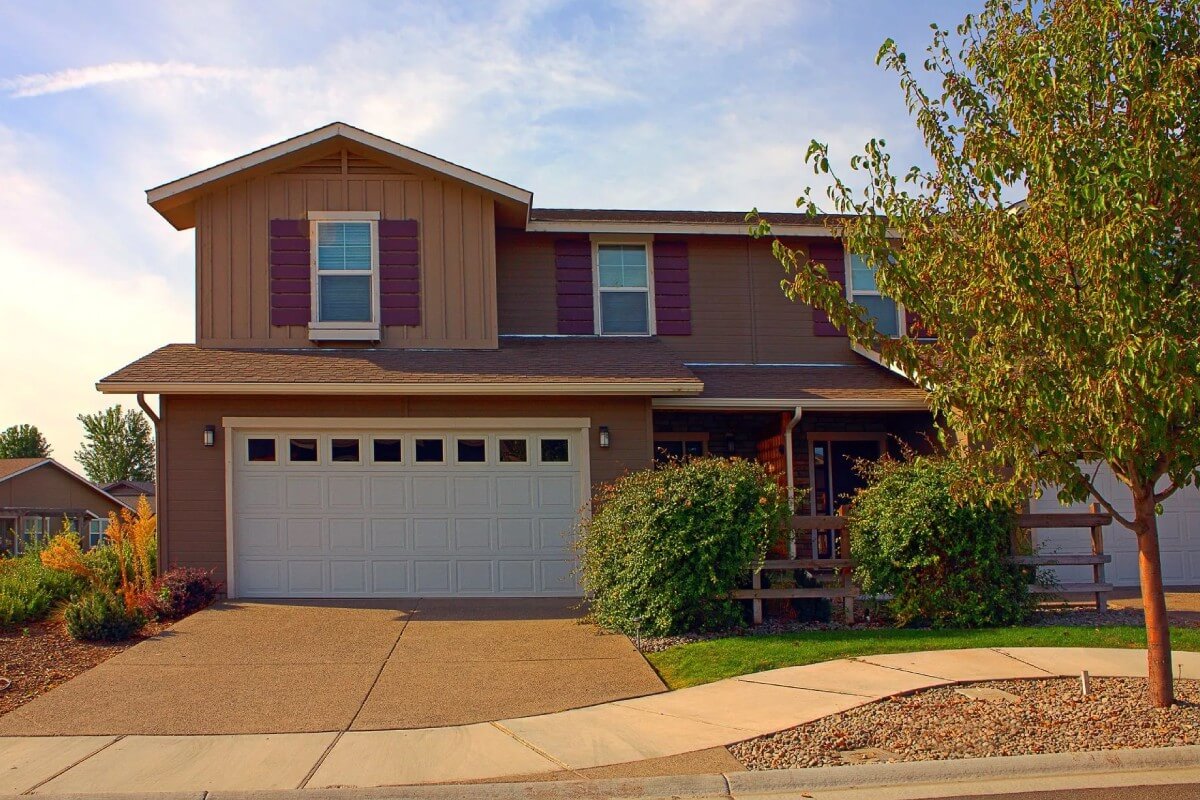The siding on your home has an important job. It has to make your home more energy efficient, keep the elements out, and look great. But how do you know it’s time to replace your home’s existing siding? And when that time comes, what kind of siding is best?
Here’s everything you need to know about the best siding for houses.
Signs Your House’s Siding Needs Replacement
The best exterior siding is designed to last for decades, but sooner or later, it will need to be replaced. Here are the main signs that your home’s siding needs to be replaced:
- Rot – Signs of wood rot indicate that your siding can no longer carry out its role, so it’s time to replace it.
- Holes/Cracks – Not only are holes and cracks unsightly, but they also compromise the structural integrity of your siding.
- Higher Energy Bills – If you’ve noticed a sudden spike in your energy bills, it could indicate that something has gone wrong with your siding, and it needs to be replaced.
- Bulging/Warping – Take a walk and inspect every angle of your siding. Bulging or warping can indicate a hidden danger that could compromise the structural integrity of your home.
- Mold – Mold inside your home can come from any number of sources. However, since the best siding for a home is designed to keep moisture out, your siding could be the problem.
Ripping off your existing siding and installing new siding correctly isn’t a job that should be handled by an amateur. One small mistake could compromise the whole siding, which is why it’s best to call in a professional who can handle the job for you.
How to Choose the Best Siding for a Home
So, what is the best siding for a house? With so many materials and styles that all perform differently, choosing one can feel overwhelming. You need to make sure that you’ve got the best type of siding to protect your home. Here’s a breakdown of some of the most common types of siding.
Fiber Cement
For many homeowners, the best house siding is undoubtedly fiber cement. It’s a composite material made from cement and compressed cellulose fibers. You’ll find fiber cement being used for exterior trim, panels, boards, siding, and more.
It’s got a collection of qualities you just won’t find with other options, such as:
- Resistance to Moisture – Its resistance to moisture makes it ideal for coastal homes. And because it’s resistant to moisture, it’s also resistant to rot.
- Non-Combustible – Fiber cement is impervious to fire, which is why some insurance companies will even offer a discount if you use it on your home in areas prone to wildfires.
- Pest Resistant – If you’re tired of squirrels, woodpeckers, and termites coming after your wood siding, fiber cement is the easy way to keep them away.
- Weather Resistance – Fiber cement is also capable of handling extreme weather conditions, such as storms, cold winters, and sweltering summers, without cracking, shrinking, or swelling.
You may also see fiber cement being referred to by the product name “Hardie board.” Regardless of the name used, it’s the same thing. Why the nickname “Hardie board”? Because one of the best brand names on the market today is James Hardie fiber cement siding. It’s durable, tough, and offers value for money, making it a top contender for the best siding for a home. However, this material is not DIY-friendly and will require professional installation.
Wood Siding
Wood siding is the traditional choice. You’ll find shakes, shingles, clapboards, and more styles. It gives off a naturally warm appearance and a timeless aesthetic that homeowners love. Premium projects typically call for wood siding. However, beware that some maintenance will be required.
Here are some common examples of wood sidings:
- Pine/Cedar Siding – Dimensionally stable and affordable, both pine and cedar are excellent siding choices. However, while pine and cedar may be affordable, they have little resistance to rot and pests.
- Wood Shingle – Wood shingle siding is often considered one of the best home siding options for those on a budget because it can be installed over existing clapboards, reducing the overall cost of the installation.
- Engineered Wood – Cut down on the high price of other woods by opting for engineered wood. Engineered siding is cheaper, better for the environment, and has been treated to be installed directly over wood framing. No exterior sheathing is required.
To choose the best siding for a house, you’ll need to weigh up the pros and cons of each type of wood. You can also consult a professional who has the expertise to advise you on which wood is optimal for your home.
Stone Veneer Siding
If you want your home to look like it’s made of stone but can’t afford the real thing, stone veneer siding adds a thin layer that looks like solid masonry. It’s fairly easy to install and can be an excellent upgrade for drab exteriors.
There are many styles of stone to choose from, depending on where you live. Stone veneers are typically made from good old Portland cement, some natural additions, and pigment. The main attraction of stone veneer is that almost no maintenance is required, other than occasionally filling in any cracks that appear between the stones.
Vinyl Siding
If you want the best siding for a home that provides you with value for money, vinyl siding is for you. It’s robust, long-lasting, affordable, and doesn’t take much time for professionals to install.
How to Make Your Siding Last
Even the best house siding requires a certain amount of maintenance. Even if you choose low-maintenance options like vinyl or fiber cement, you’ll still need to do some upkeep to keep your home’s siding in pristine condition. This isn’t just to keep the outside of your home looking nice, but to ensure your siding is doing its job.
Here are the steps you should take to make sure your home’s siding lasts as long as possible.
Regularly Inspect Your Siding
The easiest way to maintain your siding is to take a proactive approach. After all, you can’t fix something if you don’t know it’s broken. Take a walk around your home and inspect the siding every so often. Look for cracks, holes, signs of pests, and anything else that looks out of the ordinary.
Make Repairs Immediately
Avoid having to replace your siding prematurely by repairing minor damage immediately. While it is possible to perform DIY siding repairs, it’s always best to call in a professional so you don’t risk worsening the damage and threatening your home’s structural integrity.
Watch for Water
As a homeowner, you already know that moisture is the enemy of any household. If you’re starting to spot wet patches, mold growth, or mildew growth, call a professional to clean up the problem immediately. The longer this problem is allowed to fester, the costlier it will be to fix.
Keep it Clean
Keep your siding looking great by periodically cleaning it with soapy water. You don’t need to set a schedule, just give it a shine whenever it starts to look a little dirty. Regular cleanings will stop discoloration from occurring. Just make sure you avoid using any harsh cleaning agents or abrasive cleaning tools, or you might ruin the look of your siding. Good old soap and warm water are all you need to preserve the finish of your siding.
Follow Material-Specific Maintenance Guidance
Vinyl, fiber cement, and wood sidings are all very different products. Wood needs to be regularly painted, fiber cement needs to have its cracks filled, and vinyl should be brushed and washed. Talk to your Kansas City siding installation professionals about what material-specific maintenance you should be doing.
Bordner Home Improvement is on Your Side
The best siding for a home is the one that protects your household, looks great, and doesn’t require too much work. Replacing your home’s siding is a big job that needs the professional touch of a reliable team of contractors. At Bordner Home Improvement, we can install home siding quickly, safely, and affordably. Still not sure what siding to get? Schedule an appointment with our team and our experts will advise on the best type of siding for you.
For all your home improvement needs, request a free consultation today!






